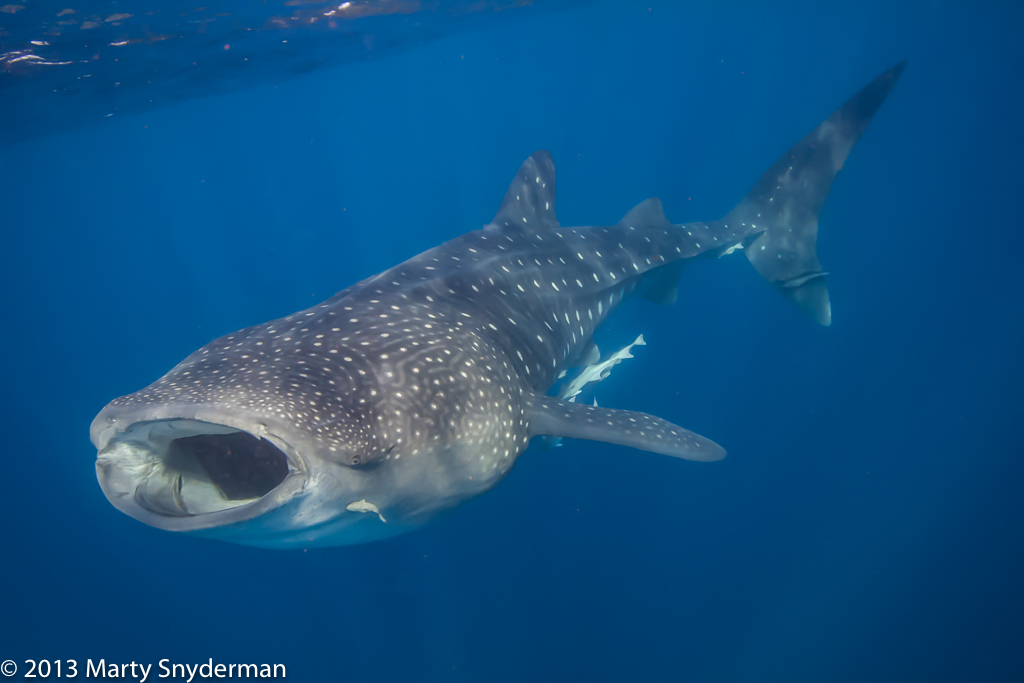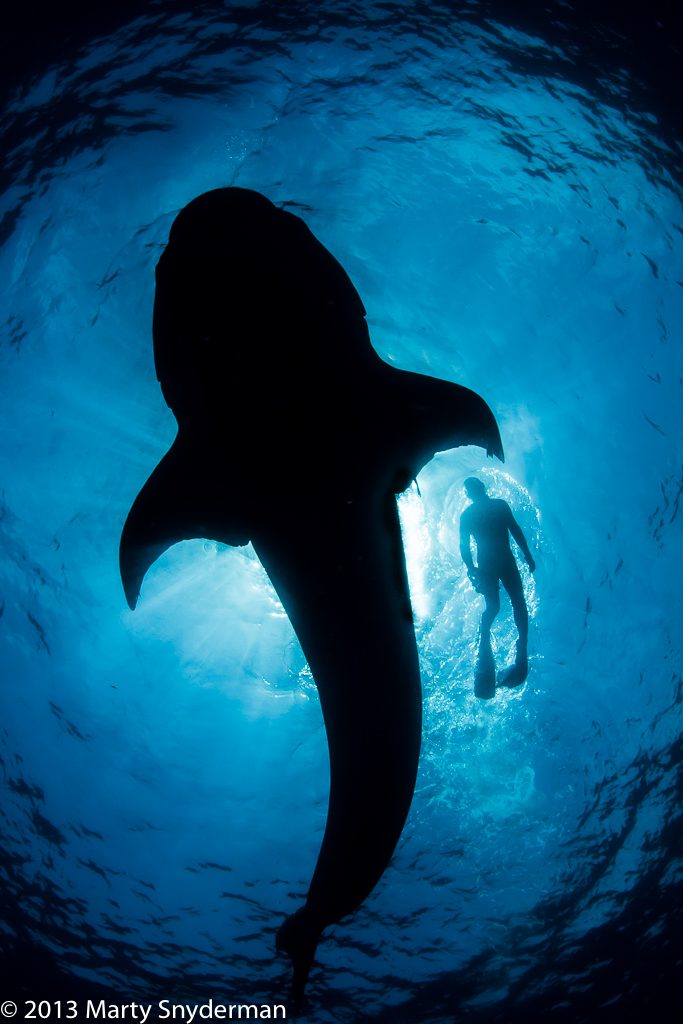Whale Sharks – A Complete Guide
The Mysterious Creature

For more divers than anyone can keep track of, just one prolonged encounter with a whale shark is analogous to finding diving’s Holy Grail. For many years, untold numbers of divers spent countless dollars on the expedition after expedition in pursuit of their dream dive. Perhaps it was because of the challenge and adventure. Perhaps it was because this species is the biggest fish in the sea. But whatever the reason, there is little question that a lot of divers are fascinated by these majestic creatures.
Homes For The Uncommon Whale Shark
Although whale sharks are generally considered uncommon, today we know that there are a number of areas around the world including Ecuador’s Galapagos Islands, the Maldives, the Philippines and areas in Mexico and Indonesia where these docile giants are known to aggregate. And in recent years, many divers have flocked to these areas where they have enjoyed the encounter of their diving dreams.
When it comes to size in the world of fishes, the whale shark, Rhincodon typus, reigns supreme. Individual whale sharks can attain proportions of close to 50 feet and 30,000 pounds. But divers who have been fortunate enough to encounter whale sharks in the wild often refer to them as gentle giants and anything but threatening.
Like all sharks, rays, and skates, the whale shark has a skeleton made of cartilage, not bone. The whale shark’s taxonomic name is derived from the Greek rhyngchos meaning rasp and odous meaning teeth. This name is an obvious reference to the fact that unlike many sharks that possess relatively large, sharp, often serrated teeth, the teeth of whale sharks are quite small. That said, an adult has as many as 27,000 teeth arranged in as many as 300 rows. While those numbers can sound ominous, you can relax, as the largest tooth is only 3 mm long. Interestingly, the teeth serve no known purpose in helping the animals acquire food.
Their enormous size alone makes whale sharks easy to identify, but other prominent characteristics include ridges that run the length of their body, white spots on the top portion and a wide flattened mouth that is located on the front of the face, in the terminal position, as opposed to being underslung as is the case in most shark species.
The body color of whale sharks varies, but they are generally dark brown to dark blue to black. The body of a whale shark is generally streamlined and somewhat depressed. The head appears to be noticeably flattened. The first dorsal fin is significantly larger than the second, with both dorsal fins being positioned relatively far back on the body. The asymmetrical tail is semi-lunate with the upper lobe being larger than the lower lobe.
The whale shark is a widely distributed species. It is known to occur in all tropical and warm temperate seas with the exception of the Mediterranean Sea. Whale sharks are generally believed to be highly migratory, but there is a lack of evidence that allows for a definitive conclusion. Many specialists suggest that the movement of whale sharks is tied to the productivity of plankton and other food sources that they consume.
While whale sharks do roam the open sea, it is not surprising that most encounters with scuba divers and snorkelers occur close to coastal regions. Another advantage for snorkelers or divers who are looking for an encounter with these gentle giants lies in the fact that whale sharks often demonstrate a sense of curiosity about boats and people in the water, whether snorkelers or scuba dive and travel.
Whale Shark Feeding Patterns
Like baleen whales, the whale shark is a filter feeder, relying on the smallest animals in the ocean, plankton, as its primary food source. Unlike most plankton-eating vertebrates that depend upon their forward motion to make their filter feeding mechanism function as needed, by opening and closing their mouths, whale sharks utilize a suction-feeding mechanism that allows them to “suck in” water and the accompanying food. Once inside of the mouth, the prey is trapped by numerous bristly, finger-like structures known as gill rakers. The roughly four-inch-long cartilaginous gill rakers protect delicate gill tissues from particles in the water and serve as a sieve. A whale shark can filter more than 1,500 gallons of water per hour when feeding.
Whale sharks are also known to feed by assuming a vertical orientation in the water column and then rhythmically bobbing up and down as their mouth rises above the surface before sinking a few feet below the surface causing plankton-filled water to fill their mouth and flush through their gill rakers.
In addition to plankton, whale sharks are also known to feed on small fish and squid, and have been seen feeding on tunas and jacks in the two to four-pound size range.

Whale Shark Reproduction
For many years, whale shark reproduction was hotly debated among specialists. Because of one animal that aborted an egg when caught in a net in the waters of the Gulf of Mexico, some specialists believed that whale sharks were egg layers. Others believed that possibility to be highly unlikely. In 1995, the mystery was solved when a large female with 300 fetal specimens of was caught near Taiwan. That discovery led to the undeniable conclusion that whale sharks are live-bearers with an ovoviviparous stage of development. This means the young develop in eggs in the mother’s body until the eggs hatch. Sometime after hatching, the young emerge from the mother’s body.
Whale sharks are believed to be between 22 and 25 inches (55 to 64 cm) long at birth. Both sexes mature when they reach a length of just under 30 feet at an approximate age of 30 years. As is the case with most sharks, females are generally larger than males. Life span estimates are as high as 60 years.
Despite many discoveries in recent years, there is no question that there is still a lot left to learn about the lives of these gentle giants.
